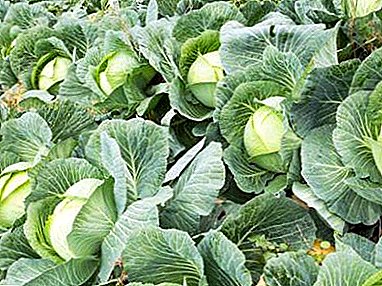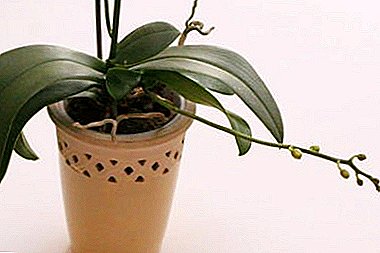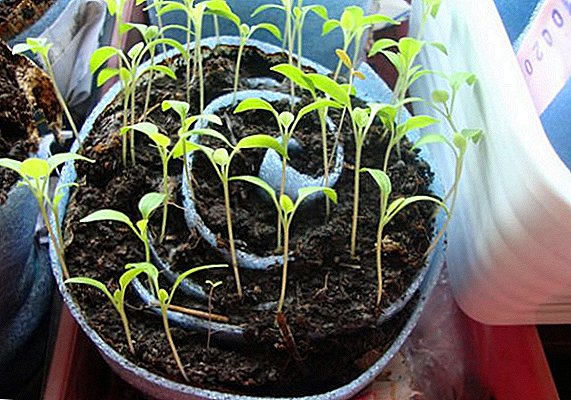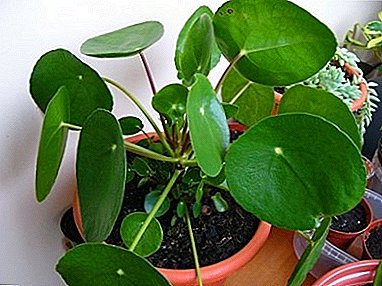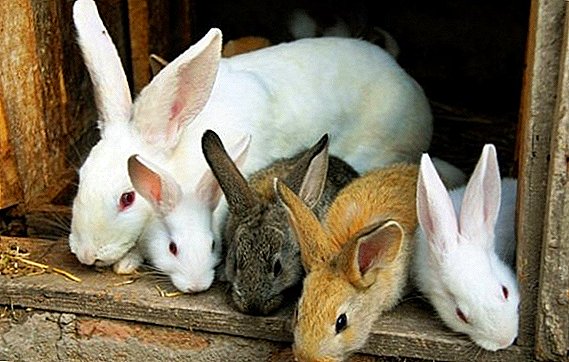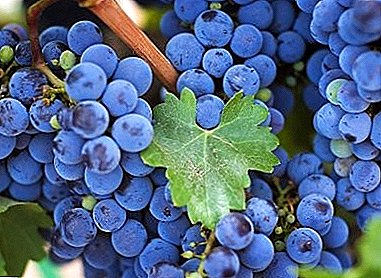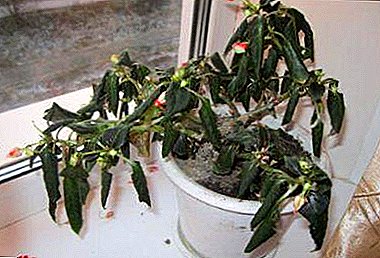
For a grower, any pathological conditions of his pets are always stressful. The balsam leaves that have changed their appearance can tell the owner exactly which pathology has affected the plant. In time, the observed symptoms - a pledge to save the flower from death. The leaves of a diseased plant can dry, change color, curl, become covered in spots and fall off. Each of these phenomena has its own reasons, and therefore the methods of struggle will be different. You may have to change the conditions of maintenance, care or fight pests. On the causes of the disease balsam, methods of control and prevention, read on ...
Features of indoor plants
Decorative balsam directly depends on compliance with the regime of watering. Its leaves and stems are very juicy, having in their composition a large amount of water. This moisture saturation must be constantly maintained. Probably, it is thanks to responsible flower growers that the balsam was nicknamed “Roly wet”, because with heavy irrigation, small droplets of sweet liquid protrude along the edges of the leaf.
From the video you will learn about the features of balsam and care for him:
What are the problems with leaf plates and why?
Dry up

The reasons for this disease may be several:
- The defeat of the spider mite. It is possible to get rid of the pest with the help of insecticidal preparations, and one treatment will not be enough, the tick larvae remain and, after a while, begin to again have a harmful effect. Therefore, the treatment is recommended every week until the complete disappearance of the parasite.
- Too dry indoor air. If the pot is located near the radiator, you should move it to another place, cooler. The main thing to ensure that the temperature was not too small. From cold balsam drops leaves.
- Low humidity in the room. To remedy the situation, you need to spray the area around the plant twice a day.
- If a balsam is not transplanted for a long time, he, taking all the substances necessary for the healthy development of a substance out of the ground, begins to suffer from their lack. In this case, will help fertilizing or transplanting.
- Leaves that are exposed to direct sunlight get burned and dry. Balsam is best kept in partial shade.
- If the soil is too dense or the earth lump is too hard because of the lack of irrigation, the roots can not fully develop. Because of this balsam can dry out.
What diseases and pests balsam can destroy the flower, as well as the causes of their occurrence and control measures, read here.
Important! Dried leaves must be removed from the plant and, as soon as possible, begin to take measures for resuscitation.
Turn white

The reasons why the balsam loses the color intensity of foliage may be as follows:
- The plant is burned by intense sunlight. To provide balsamine comfort, it must be pritenit.
- Not enough nitrogen fertilizers. The problem is solved by making appropriate dressings.
- Insufficient lighting. The process of photosynthesis does not start.
- If the leaves have acquired a whitish tint due to a raid, then they are affected by powdery mildew. This is a fungal infection caused by excessive humidity. You can help the plant by applying fungicides.
Fall down

The most likely causes of the problem are:
- Damage to the plant by the whitefly. Larvae, in the form of small white grains, should be looked for on the reverse side of the leaf. You can help the plant with insecticides.
- A sudden change in temperature or a change in the conditions of detention imposes a balsam into a state of stress. A completely healthy plant against this background can shed its leaves. It is necessary to protect the flower from adverse factors or, if it has already suffered, not to disturb and allow it to recover.
- The correct mode of irrigation for balsam - as the top layer of soil dries. Over-wetted soil can cause leaf drops.
- Dry soil can also cause loss of foliage.
- If the balsam is not enough light, instead of decorative branches you can see long bare shoots. If necessary, the plant must be dosvechivat.
- Lack of nutrients in the soil or the full development of the substrate roots also lead to dropping leaves. In this case, the flower must be fed or transplanted.
Why balsam buds and flowers fall, as well as ways to solve and prevent this problem, read here.
Stained

Causes of defect:
- Water drops on the plant. It is not recommended to spray the balsam directly on the leaves.
- Mechanical damage as a result of pests. Parasites must be removed and the balsam treated with insecticides.
- Spots can be symptoms of fungal lesions that occur in conditions of high humidity, excess nitrogen in the soil and sudden changes in temperature. Reduction of irrigation, adjustment of conditions of detention and treatment with fungicides help to stop the disease.
Why the leaves turn yellow in the room balsam and how to reanimate the plant, you can find out here.
Twisted

This symptom signals plant infection with ticks. Dry warm air provokes the multiplication of pests. The problem is solved by the use of insecticidal preparations of systemic action and adjustment of conditions of detention.
Attention! Place the pot of balsam away from the heaters and moisten the air in the room.
Preventive measures
In order not to look for ways to solve the problems of a balsam that have already arisen, it makes sense to carry out prevention in time, namely
- Create optimal conditions for plant growth and development.
- Organize a competent care (about how to properly care for the balsam, so that it bloom, learn here).
- Conduct regular flower surveys for pests.
In order to become the owner of a balsam, striking in its decorative effect, it is necessary to carefully consider the organization of a competent mode of keeping a flower. Only a healthy plant can for many years become a unique interior decoration.


